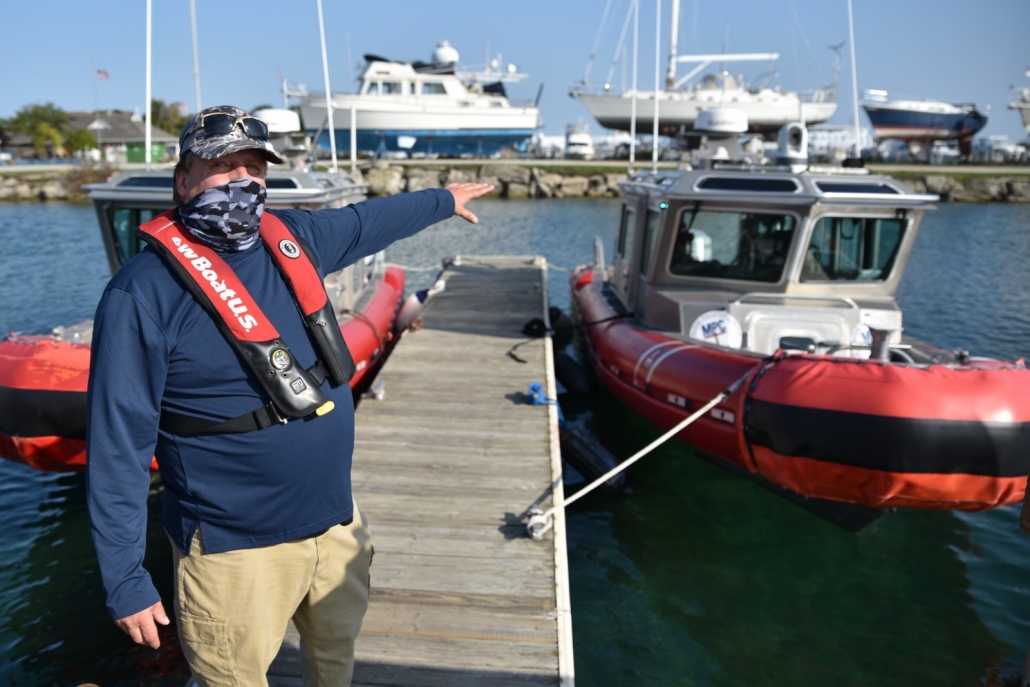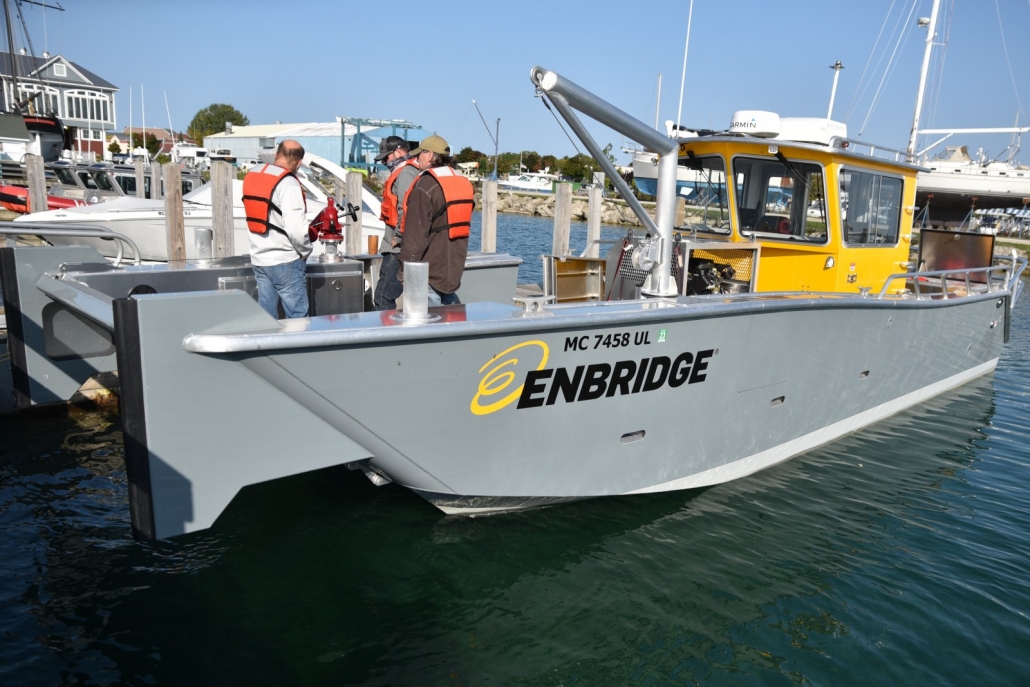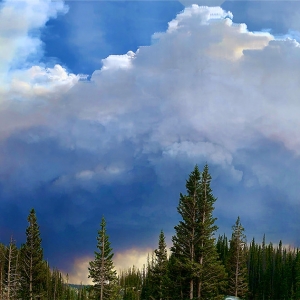Lester Graham, The Environment Report from Michigan Radio
The Canadian pipeline company Enbridge Energy has been eager to show news media its new Enbridge Straits Maritime Operations Center in Mackinaw City. Its purpose is to try to prevent another anchor strike or other damage to Line 5, the dual pipelines carrying oil and natural gas liquids.

Part of the Enbridge Straits Maritime Operations Center in Mackinaw City. Photo © Lester Graham / Michigan Radio
This new center has all the latest tech to see and contact ships to prevent damage to Line 5. But, those pipelines have been there for 67 years. What has Enbridge been doing up to now?
“The safety of our pipelines with marine traffic was really built around awareness. They are aware of our pipelines. There are regulations in place,” said Bob Lehto, an Area Operations Manager for Enbridge.
That passive awareness program didn’t work out so well because a ship damaged both of the twin pipelines.
“Today, we’re taking a much more active approach. Post April 1st, 2018, where we had the 100 year event, if you will, where a ship was unknowingly dragging its anchor through the Straits of Mackinac and it inadvertently struck our pipeline,” Lehto said.
But, it wasn’t a 100 year event. There’s been another incident since that one. This year the Coast Guard found that Enbridge’s own contracted vessels were the likely cause of damage to Line 5.
And, for the record, this “much more active approach” that Enbridge is taking is required by a consent decree with the Justice Department and the EPA.

Lead Captain Pat Beckman talks about how these former U.S. Coast Guard boats are
used. Detroit-based Marine Pollution Control has a contract with Enbridge. Photo © Lester Graham / Michigan Radio
The operations center commands a fleet of boats. Former Coast Guard Response boats have been outfitted with new high-tech gear to detect ships and boats day or night. These fast boats have two jobs.
At the Mackinaw City marina, Mike Moeller was showing news media the boats . Moeller is Enbridge Director of Operations for the Great Lakes Region. He explained the first job of the boats.
“24/7, weather permitting, one of these is out over the east and west leg of line five, patrolling, looking for vessels, watching vessels and ensuring that there is nobody dragging an anchor. No one loitering over the pipelines and things like that,” he said.
Enbridge’s ops center has equipment to keep track of the large freighter ships coming through the area. The second job for these vessels is to chase down those big ships.
I was in a high speed landing craft trailing the chase boat as it approached the Great Lakes bulk carrier the Maumee powered by the tug Victory. From there, I could listen to the radio contact between the chase boat and the Victory

This high-speed landing craft is the latest addition to Enbridge’s fleet. It would be used
to try to clean up oil in the event of a spill. Photo © Lester Graham / Michigan Radio
Enbridge: “Good morning there, captain. This is Enbridge boat 25745 conducting safety patrols in the Straits of Mackinac. We would like to approach you on your port side, passing by on your stern and coming up your starboard side to complete our safety patrol.”
Victory: “Yeah, that’ll be fine. We appreciate the heads up.”
The chase boat circled the freighter looking for a dragged anchor or cables dangling loose, anything that might damage Line 5. It was all clear.
Enbridge says it will ensure the Straits are protected and safe while it pursues the Great Lakes Tunnel Project which is planned to house Line 5 a hundred feet below the lake bed.
“This is just yet another effort, I think, to kind of distract the public and our state leaders on the ongoing crisis that continues in the Straits of Mackinac,”, said Liz Kirkwood. She’s the Executive Director of the environmental group FLOW-For Love Of Water.
She says the only safe answer is to shut down Line 5.
“Here we are 10 years after Enbridge’s Kalamazoo disaster and Line 5 is still operating. It’s quite extraordinary to think we still have an oil pipeline in the middle of our Great Lakes,” Kirkwood said.
Back at the Enbridge Straits Maritime Operations Center, Bob Lehto says until the tunnel is built, the company is keeping eyes on the ship traffic in the Straits.
“If we were to determine that there’s something unsafe and that vessel couldn’t do something about it in sufficient enough time, we have the ability to be able to communicate internally with our own command center and shut down and isolate that section of line,” he explained.
That section under the Straits is two 20 inch pipes four-and-a-half miles long. Even if you shut the valves on either side, there’s close to 388 thousand gallons of oil in each pipeline. If both pipelines were damaged, you could see an oil spill nearly as big as the Enbridge Line 6B spill in the Kalamazoo River ten years ago. It was one of the biggest inland oil spills in the country.
The Great Lakes News Collaborative includes Bridge Michigan; Circle of Blue; Great Lakes Now at Detroit Public Television; and Michigan Radio, Michigan’s NPR News Leader; who work together to bring audiences news and information about the impact of climate change, pollution, and aging infrastructure on the Great Lakes and drinking water. This independent journalism is supported by the Charles Stewart Mott Foundation.




